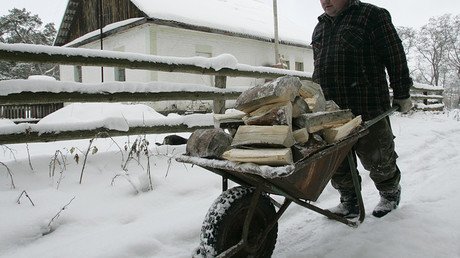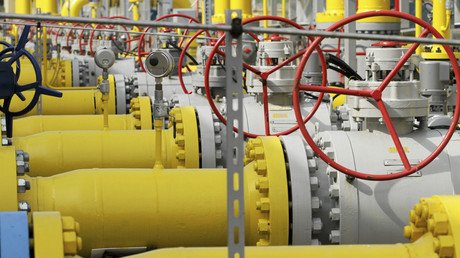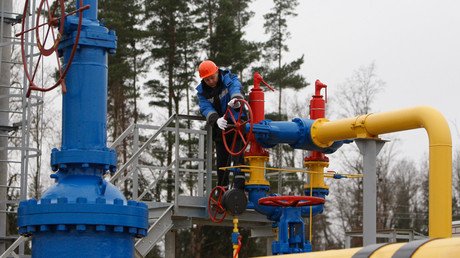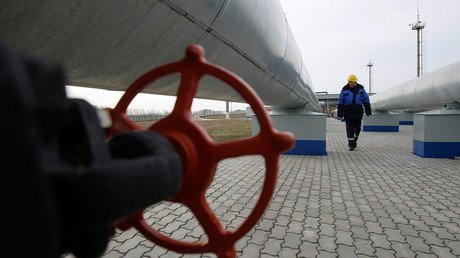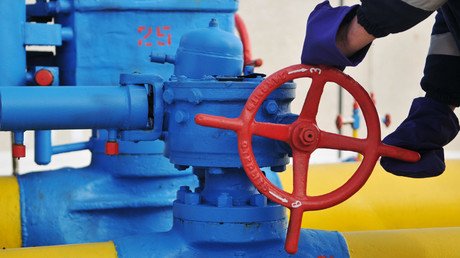Ukraine’s Naftogaz head claims Ukrainians over-consumed, as US State Dept praises Kiev gas cuts
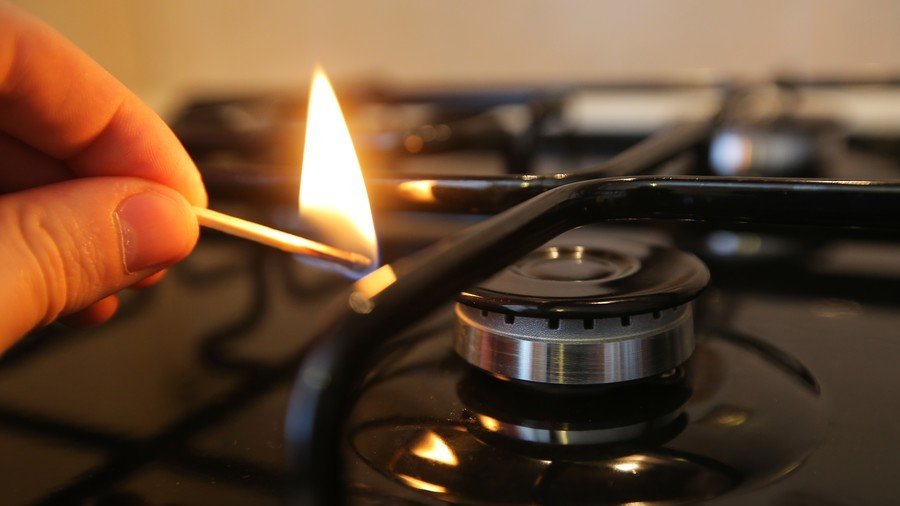
The Ukrainians were clearly over-consuming gas during periods when Russia’s Gazprom was supplying it, Naftogaz CEO said, days after Gazprom terminated its contract with the Ukrainian company and new gas shortages were revealed.
Speaking at the CERAWeek annual energy conference in Houston, Texas, Andrey Kobolyev claimed that Ukraine had become a “victim of a vicious circle” of Russian gas consumption. “We had giant and ineffective consumption,” he said, adding that “Ukraine used six times as much gas as any European country” if one takes into account how much gas one household spent on a per-square-meter basis.
The Ukrainian energy company head then, predictably, went on to blame “populist politicians, who were enjoying strong support from Russia” for such a state of affairs. At the same time, he admitted that the Ukrainian households bought natural gas for a reduced cost that accounted for just five percent of its real market cost, before Naftogaz de facto ceased buying gas from Gazprom. That did not stop him from calling this fact just another “reason for excessive consumption.”
“We are still far from the European standards and we still have to reduce our [gas] consumption,” Kobolyev added.
The statements came roughly a week after the Russian state-run gas giant Gazprom announced that it would no longer provide gas shipments to Naftogaz, starting March 1, as the two sides failed to reach an agreement on a supply contract. This forced the Ukrainian authorities to drastically limit gas consumption because of a gas reserves shortage.
The move was quickly hailed in Washington. “The Ukrainian citizens have inspired the world by pulling together to reduce gas consumption by 14% last week to ensure reliable gas delivery to European customers. Gazprom has failed in its attempt to portray Ukraine & Naftogaz as unreliable transit partners,” the US State Department spokesperson, Heather Nauert, wrote on Twitter.
#Ukraine citizens have inspired the world by pulling together to reduce gas consumption by 14% last week to ensure reliable gas delivery to European customers. @GazpromEN has failed in its attempt to portray #Ukraine & @NaftogazUkraine as unreliable transit partners. #UATransit
— Heather Nauert (@statedeptspox) March 7, 2018
In reality, the level of gas consumption in Ukraine at local level does not affect Russia’s gas supplies to Europe, as this gas is transited through a separate pipeline. On March 2, Gazprom announced that it would terminate its contracts with Naftogaz for the supply and transit of natural gas. It added that it does not plan to cease its gas supplies to Europe and would not stop any gas flow to Europe any time soon.
It also appears that gas cuts in Ukraine had nothing to do with civilians willingly tightening their belts, as the Ukrainian authorities in fact ordered the closure of schools and kindergartens in many regions of the country and made thermal power plants switch to diesel fuel because of the gas reserves shortage. Despite these facts, Kiev still opted for buying expensive gas in Europe instead of settling its disputes with Gazprom.
According to Ukraine’s Naftogaz Commercial Director Yury Vitrenko, the average price of gas from European suppliers in March this year exceeded the price of gas from Gazprom by almost 34 percent. Still, Kiev used the energy supply shortage to once again stir up anti-Russian sentiments. On March 2, Naftogaz called on Ukrainians to “stick out a bit longer” by reducing gas consumption to literally spite Gazprom and the Russian President Vladimir Putin personally. The Ukrainian citizens were urged to endure low temperatures and cold weather until it “gets warmer.”
Russia’s Gazprom and Ukraine’s Naftogaz engaged in a bitter legal dispute back in 2014. Gazprom and Naftogaz signed a contract for the supply of gas from Russia to Ukraine in January 2009 until the end of 2019. Under the agreement, Ukraine was to buy 40 billion cubic meters of gas per year. From 2010, the volume rose to 52 billion cubic meters annually.
Since 2012, Naftogaz has ceased buying the contracted volume, and stopped buying Russian gas entirely in November 2015, replacing it with reverse gas supplies from Europe. Gazprom then demanded penalties from Naftogaz for insufficient withdrawal of gas by the Ukrainian side. It also requested payment of the debt for gas delivered to Ukraine between May and June 2014. Naftogaz pushed for a retroactive change in the price of gas, the reimbursement of overpayments and a repeal of the ban on reselling Russian gas.
The dispute was brought to the Arbitration Institute of the Stockholm Chamber of Commerce. The Swedish court eventually ruled that Naftogaz has to pay slightly more than $2 billion to Gazprom, with a $600,000 fine added for every day of non-payment.
However, it also ordered Gazprom to compensate Naftogaz $4.6 billion for what the latter sees as lost profit from the transit of Russian gas to Europe. It then justified its decision by referring to a difficult economic situation in Ukraine. The Head of Gazprom, Alexey Miller, called the court’s decision “asymmetric” and “very politically motivated.”
On Wednesday, Ukrainian authorities started to seize assets belonging to Gazprom in what they called compliance with the decision of the Stockholm court. They also said they would collect a fine from the Russian gas giant over its alleged violation of the Ukrainian anti-monopoly legislation.
